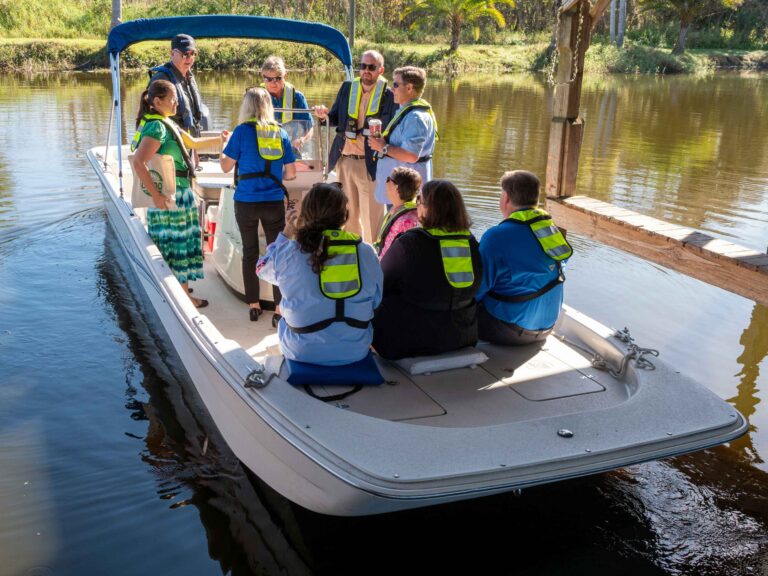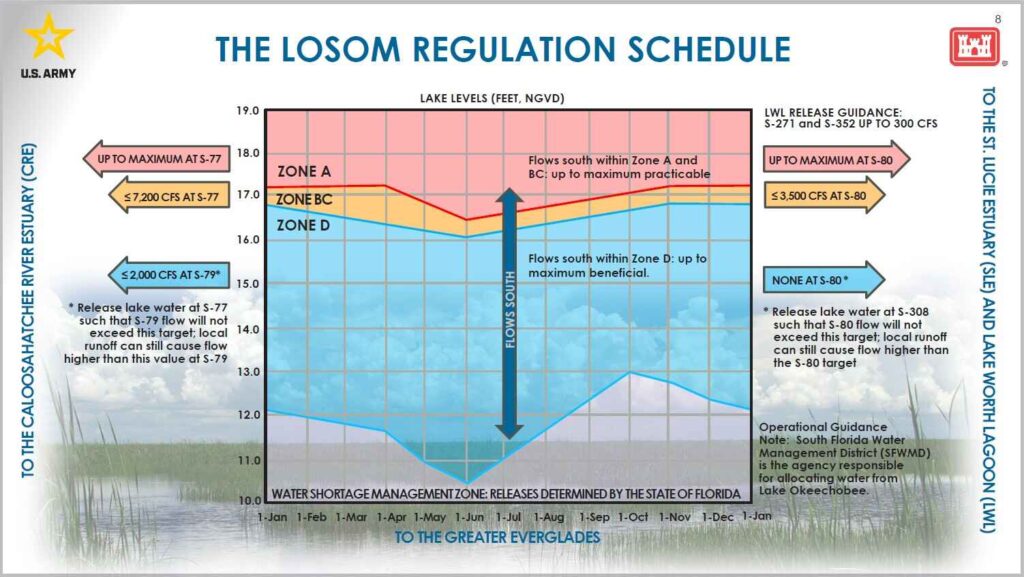By DANIELLE FITZPATRICK
Lake Jesup, one of three major lakes in the St. Johns River’s middle basin, has a complicated environmental past, yet is improving due to the efforts of many central Florida organizations and projects working to restore it.

This expansive lake, which shifts from 8,000 to 16,000 acres, depending upon wide-ranging water elevations, has experienced alterations dating back to the 1800s, as Florida has developed and population increased.
Steamboats began modifying the lake’s natural connection to the St. Johns River to facilitate easier navigation along the river. Later, the U.S. Army Corps of Engineers excavated a channel that diverted the river’s flow past Lake Jesup. This, combined with a train causeway that cut through the floodplain, resulted in only a single channel connecting the two, limiting the river’s capacity to circulate water and flush nutrients from the lake.
The urbanized development of central Florida played a key role in the decline of the lake’s water quality. Decades of wastewater discharges to the lake’s tributaries caused a tremendous increase in nutrient inputs, leading to chronic algal blooms and the buildup of a thick layer of organic muck on the lake bottom.
However, amidst these challenges, the St. Johns River Water Management District (District), Florida Department of Environmental Protection (DEP), Florida Fish and Wildlife Conservation Commission, Seminole and Orange counties, local cities and an organization called the Friends of Lake Jesup, are making concerted efforts aimed at restoring and rejuvenating this iconic body of water.
In 1994, the Florida Legislature passed the Lake Jesup Act, prompting the District to launch diagnostic studies into the water quality issues. District scientists expanded water quality sampling and hydrologic modeling of Lake Jesup and worked with partners on initiatives aimed at revitalizing the lake.
DEP spearheaded the removal of wastewater treatment plant discharges from the lake’s tributaries and subsequently formulated a Total Maximum Daily Load and Basin Management Action Plan (BMAP). Through the BMAP process, local governments within the lake’s watershed have implemented projects that decrease the amount of nutrient loading into the lake.
“DEP and our local governments have worked hard to reduce nutrient loads going into the lake,” said Dr. Erich Marzolf, the director of the District’s Division of Water Resources. “However, legacy nutrients remaining in the muck layer contribute to ongoing algal growth, perpetuating the cycle of water degradation.”

Busby (cost-share project manager) visit a canal in Lake Jesup
With the lake’s depth only reaching 6-to-10 feet at its deepest, even a moderate wind can disturb sediment at the lake’s bottom, resuspending these legacy nutrients into the water. To help address the issue, the lake’s BMAP was updated in 2019 to include internal nutrient sources.
In addition to water quality monitoring, harmful algal bloom sampling and measuring nutrients released from the muck, the District is exploring innovative methods to enhance the lake’s water quality by reducing the legacy nutrients. The Lake Jesup Nutrient Reduction Project will employ an innovative media-based nutrient removal system expected to annually remove nitrogen by 23,800 pounds and phosphorus by 2,800 pounds. The District is also working with DEP to evaluate chemical treatment technologies to reduce the flux of phosphorus from Lake Jesup’s sediments into the water column to reduce algal bloom intensity, duration and frequency. The District’s cost-share program, in collaboration with local partners and stakeholders, has also facilitated numerous projects benefiting both Lake Jesup and its surrounding region.
“Having willing partners is crucial for continuing the restoration efforts for Lake Jesup,” said Cammie Dewey, the District’s strategic planning basin coordinator for the Middle St. Johns River Basin, where Lake Jesup is situated. “For example, Seminole County has utilized cost-share funds to complete quite a number of retrofit and flood protection projects that have also contributed to improving the lake’s water quality.”
The District and Seminole County have also acquired 8,575 acres of floodplain surrounding Lake Jesup. These conservation areas safeguard the extensive floodplain marshes that support the lake’s restoration efforts and increase flood protection in the area. Additionally, they offer a recreational area for activities such as hiking, biking, birding, horseback riding and wildlife observation.
“We’ve made significant strides and remain dedicated to continued collaboration with stakeholders to find solutions,” Marzolf said. “Our end goal is the revitalization of Lake Jesup, thereby enhancing the quality of life for residents, animals and visitors across central Florida.”
Danielle FitzPatrick is a Public Communications Coordinator at the St. Johns River Water Management District























